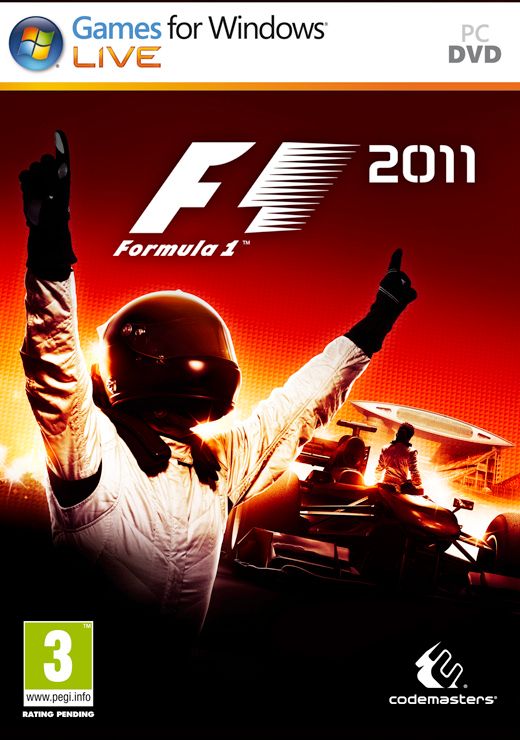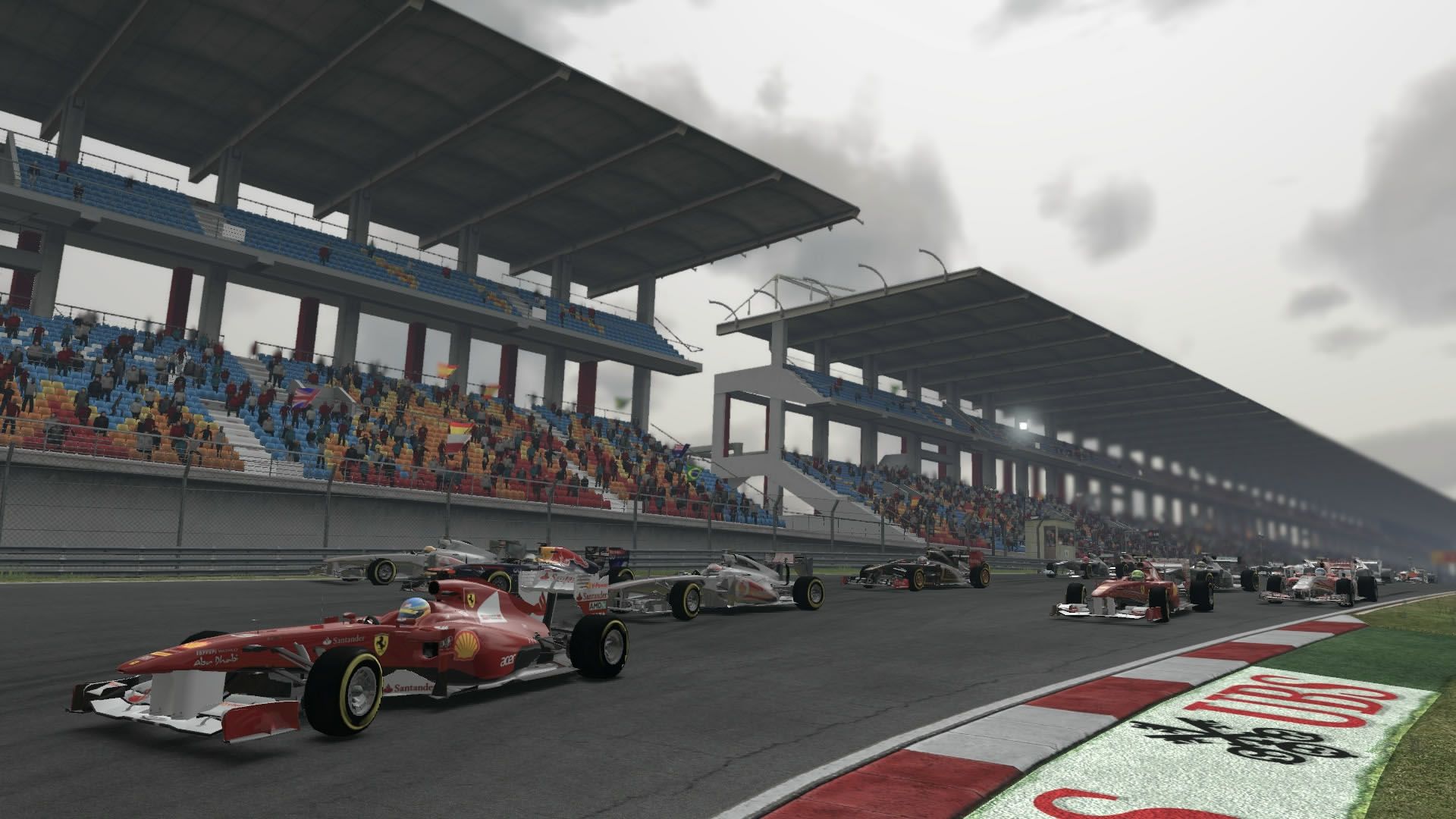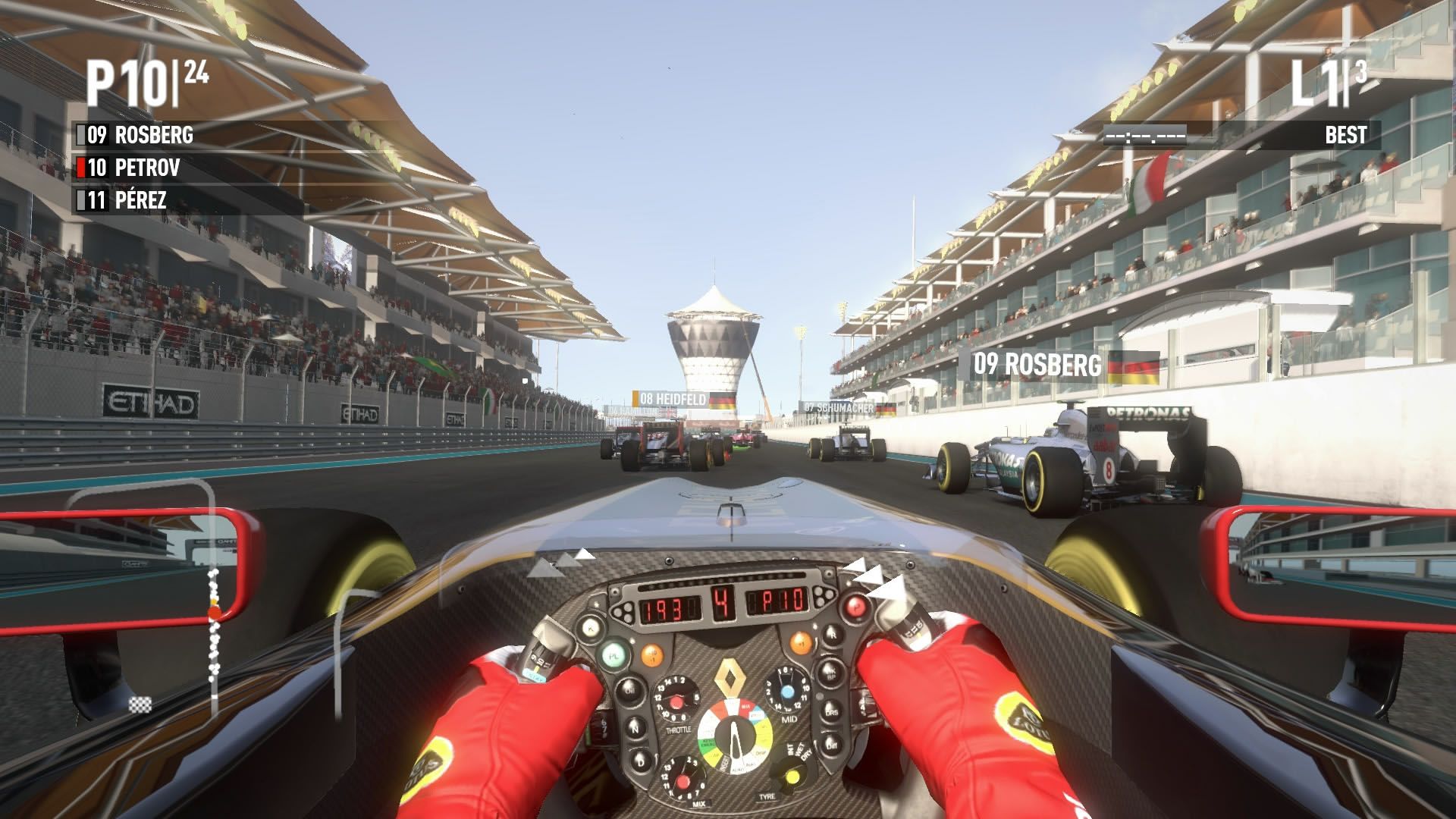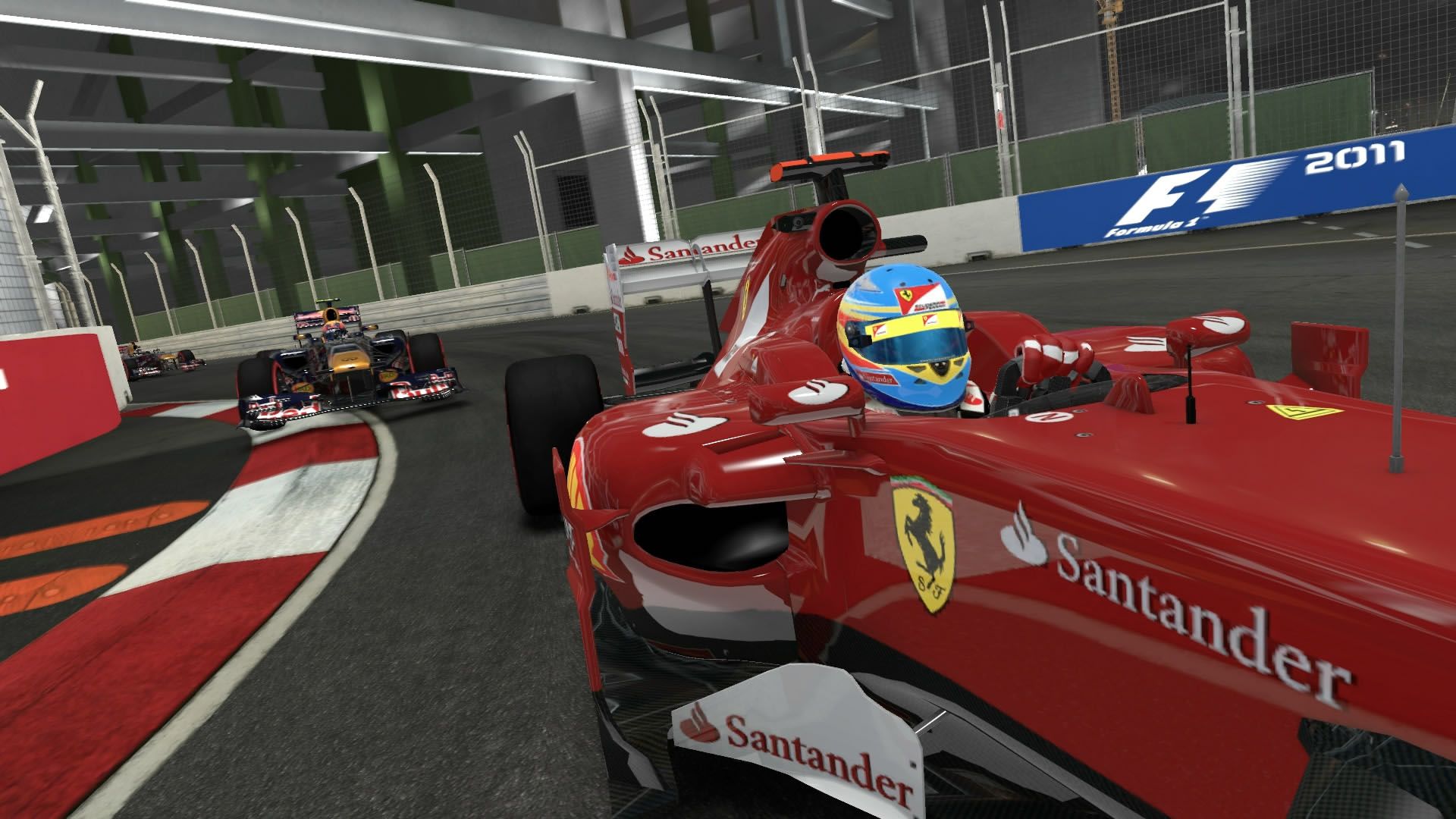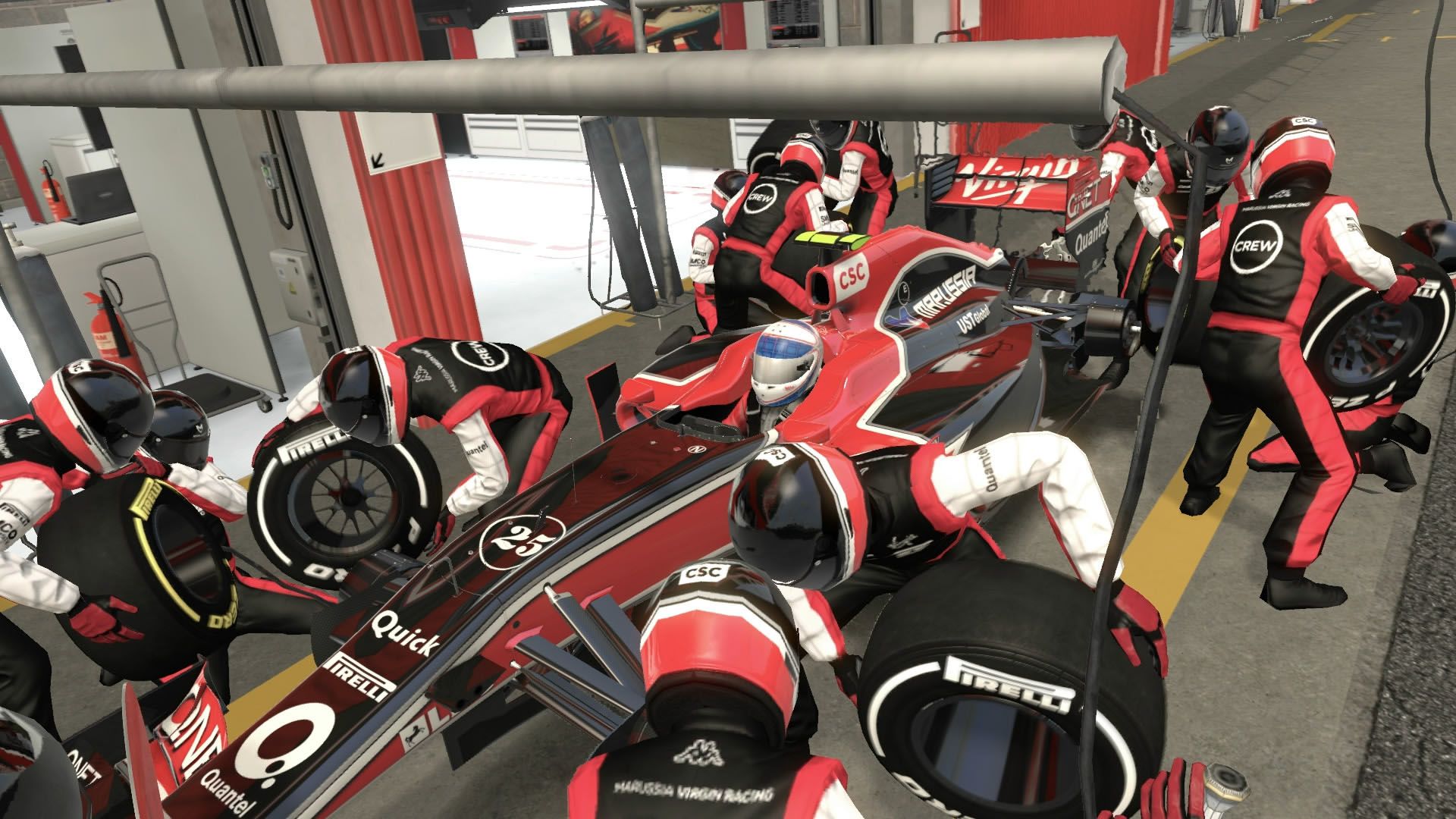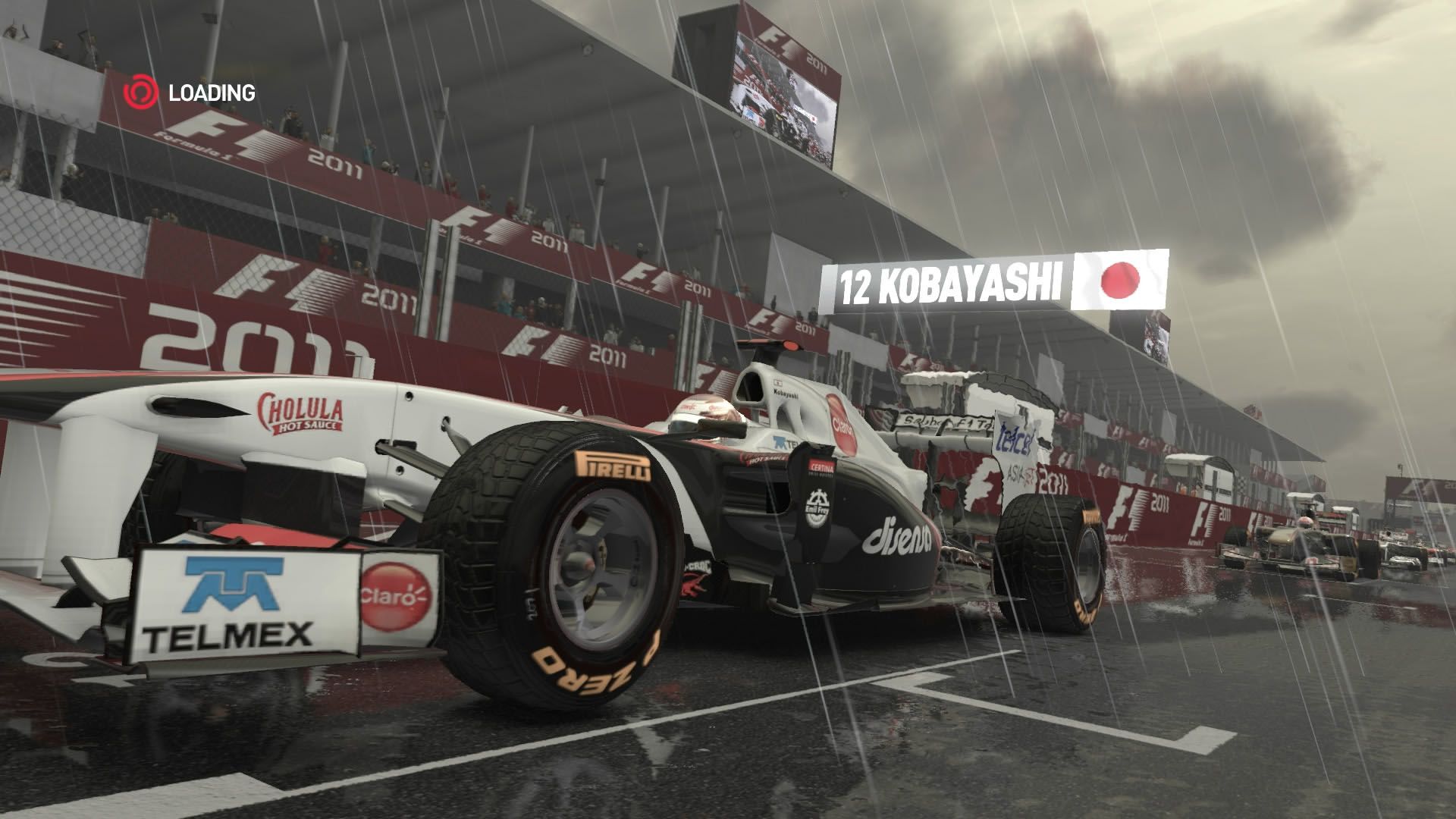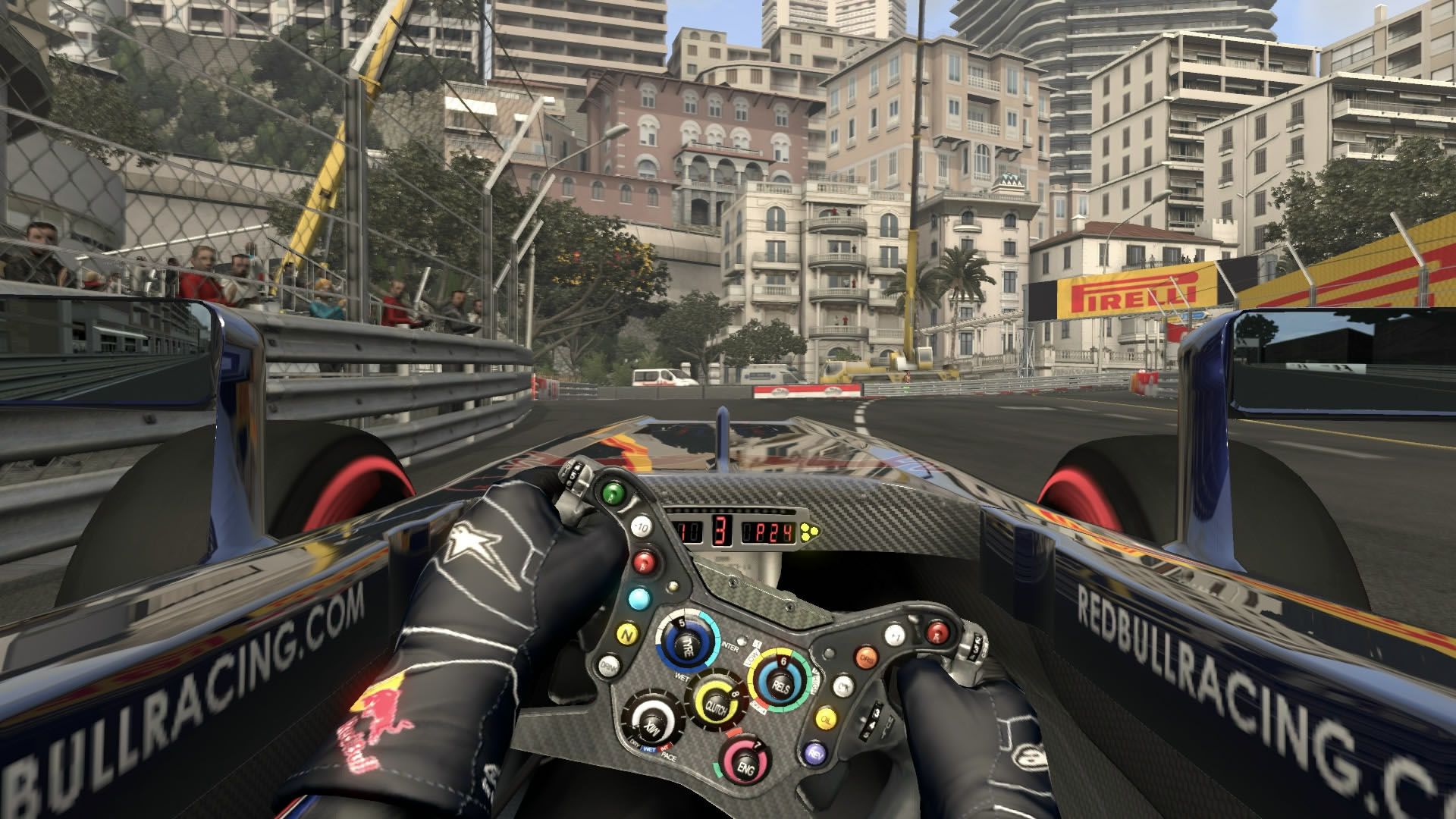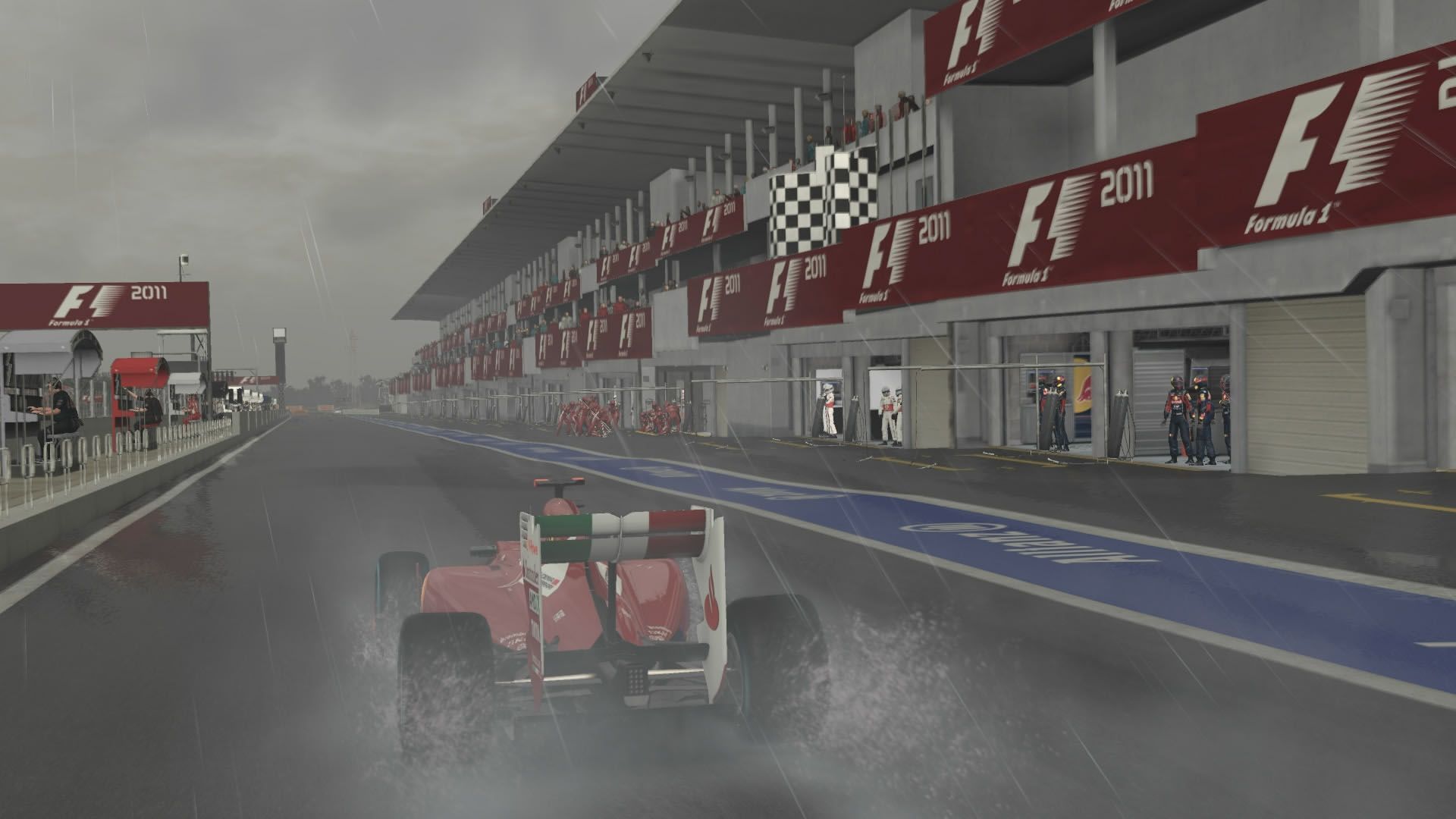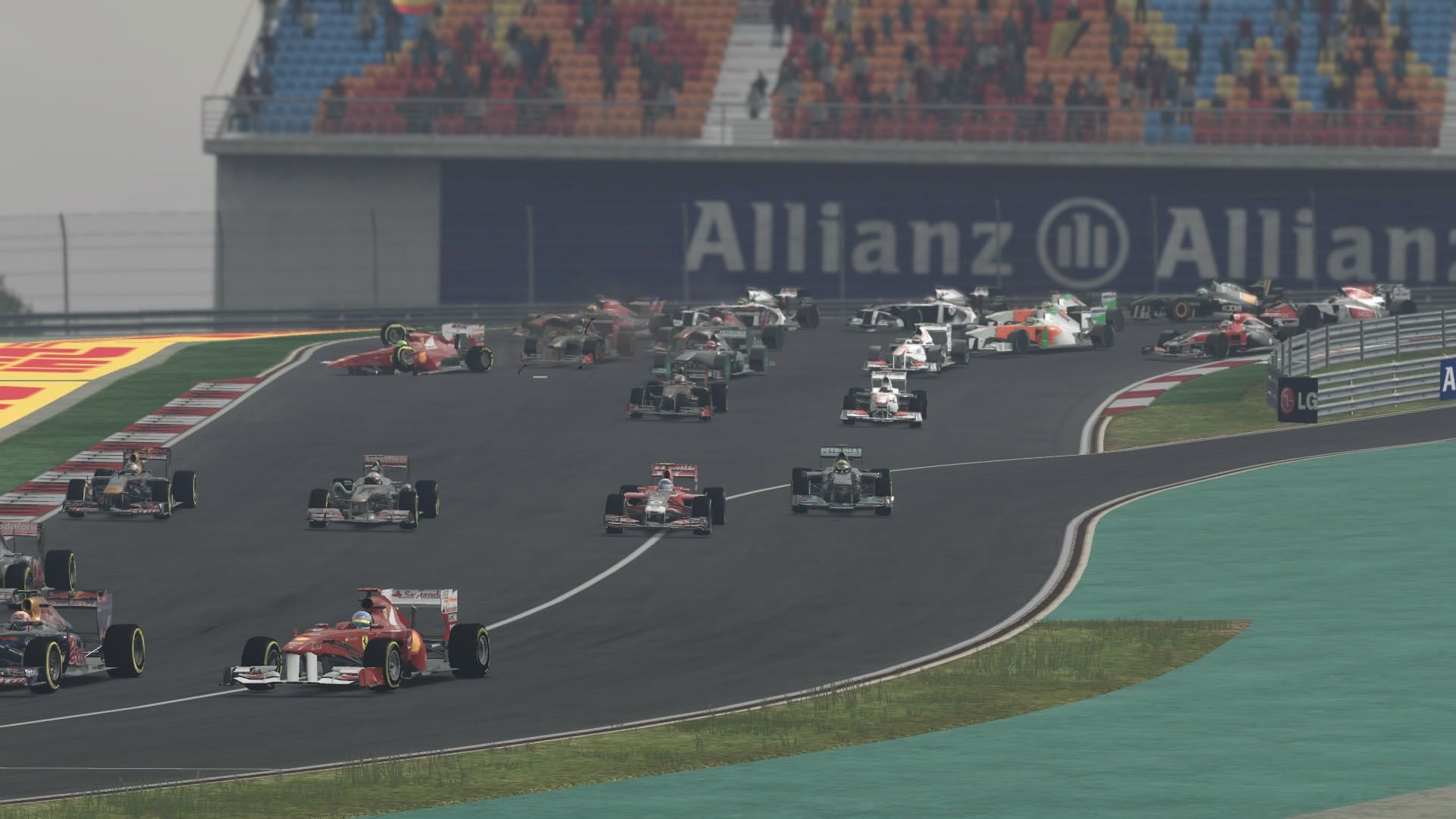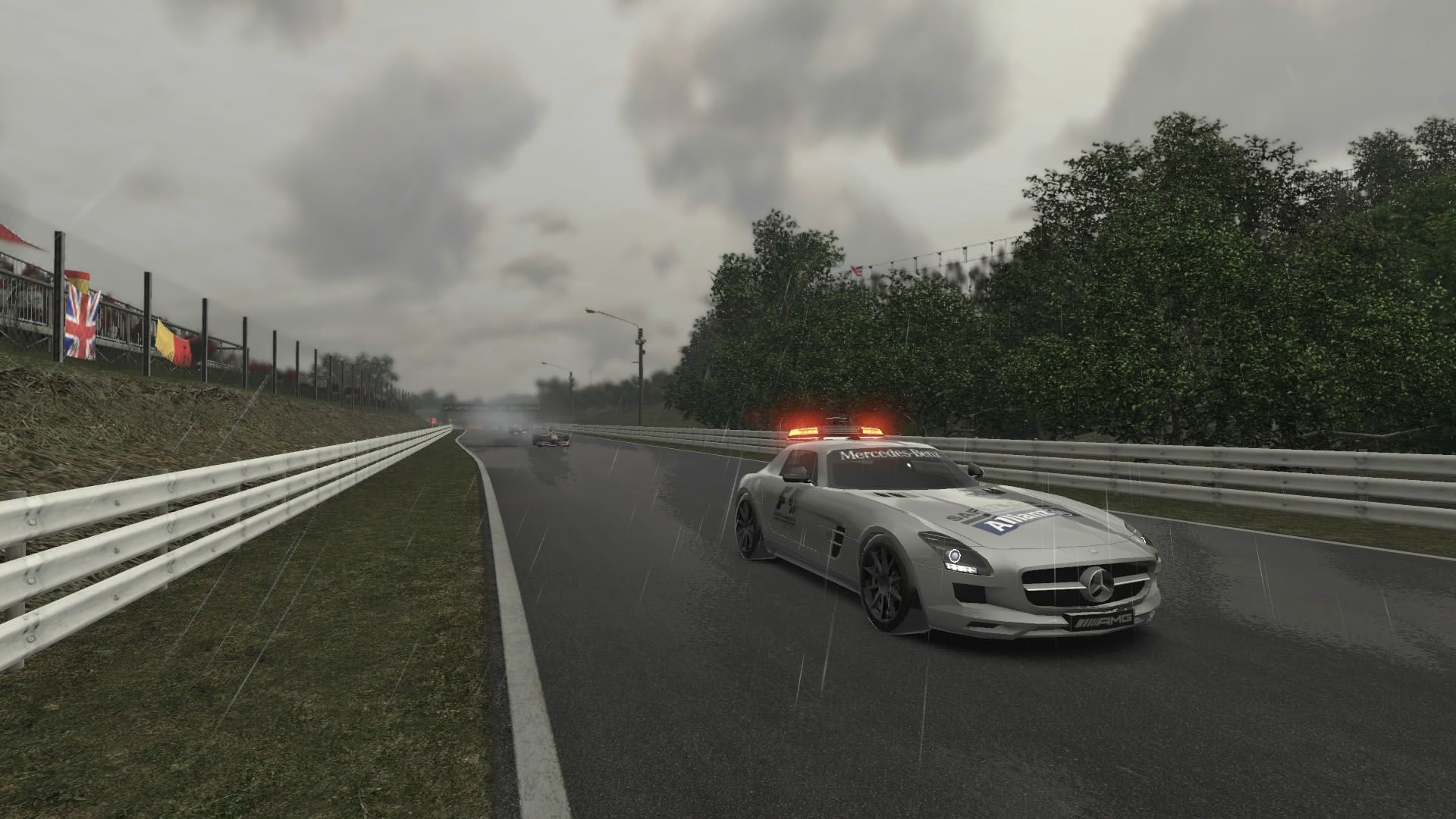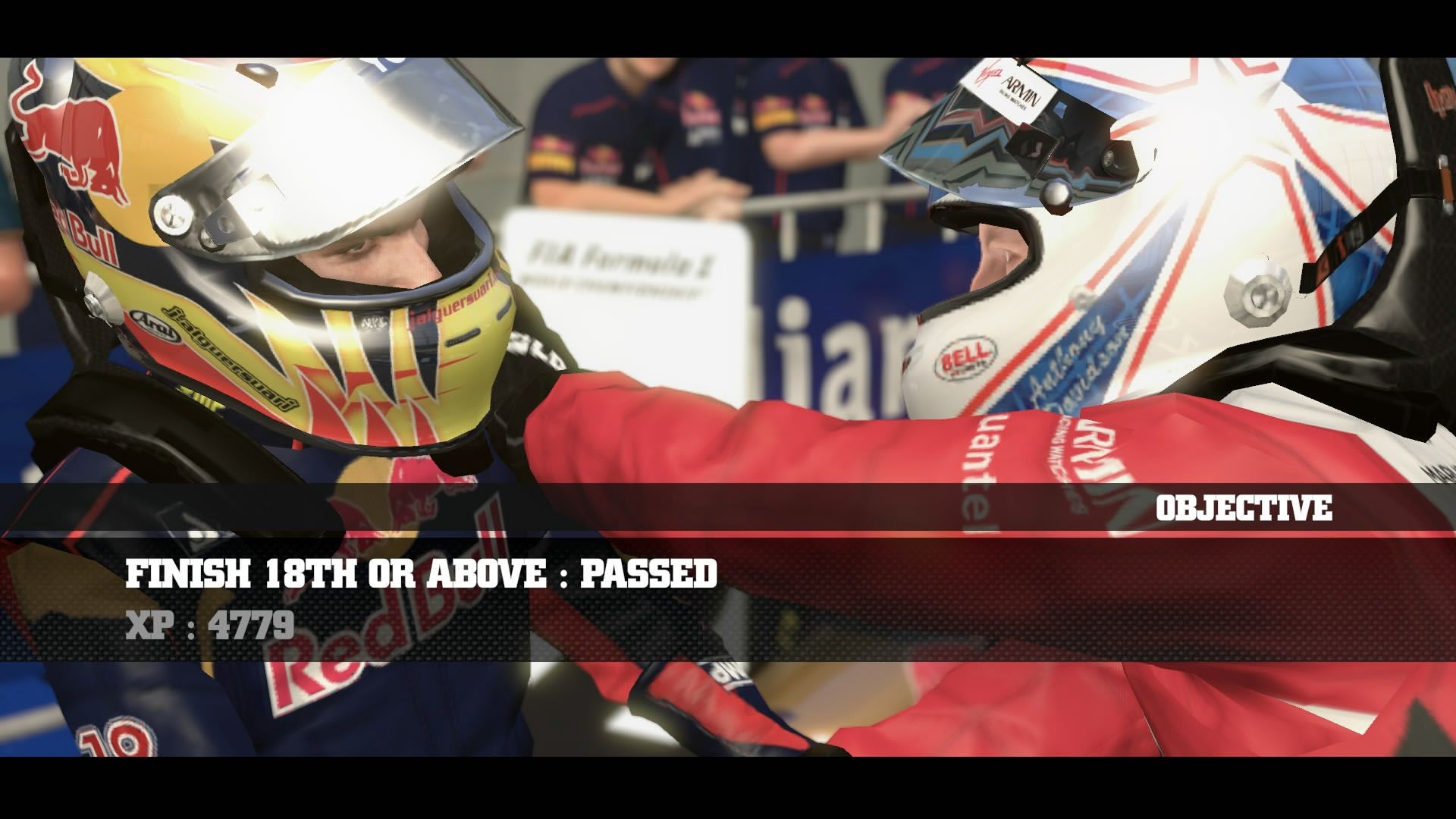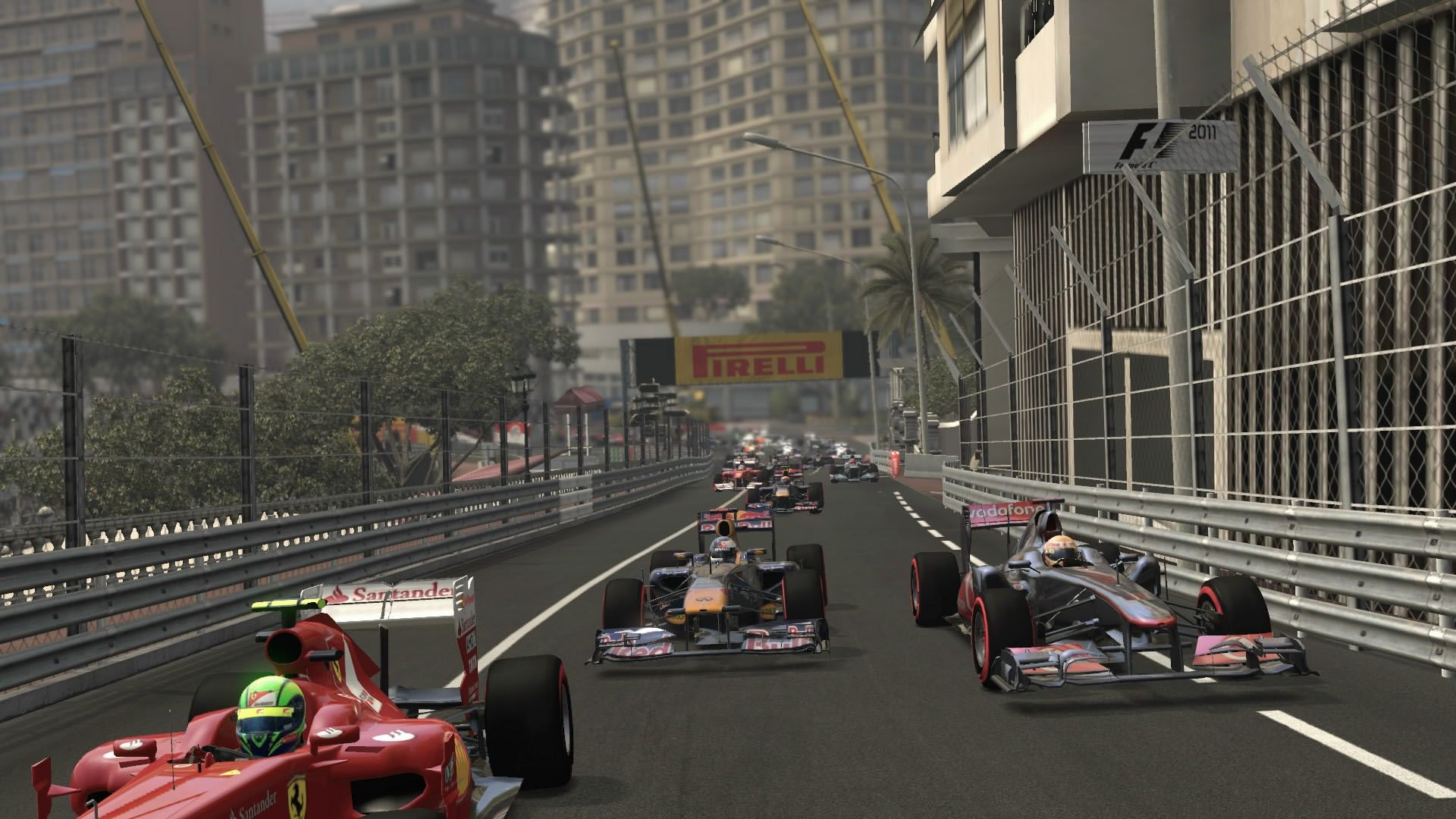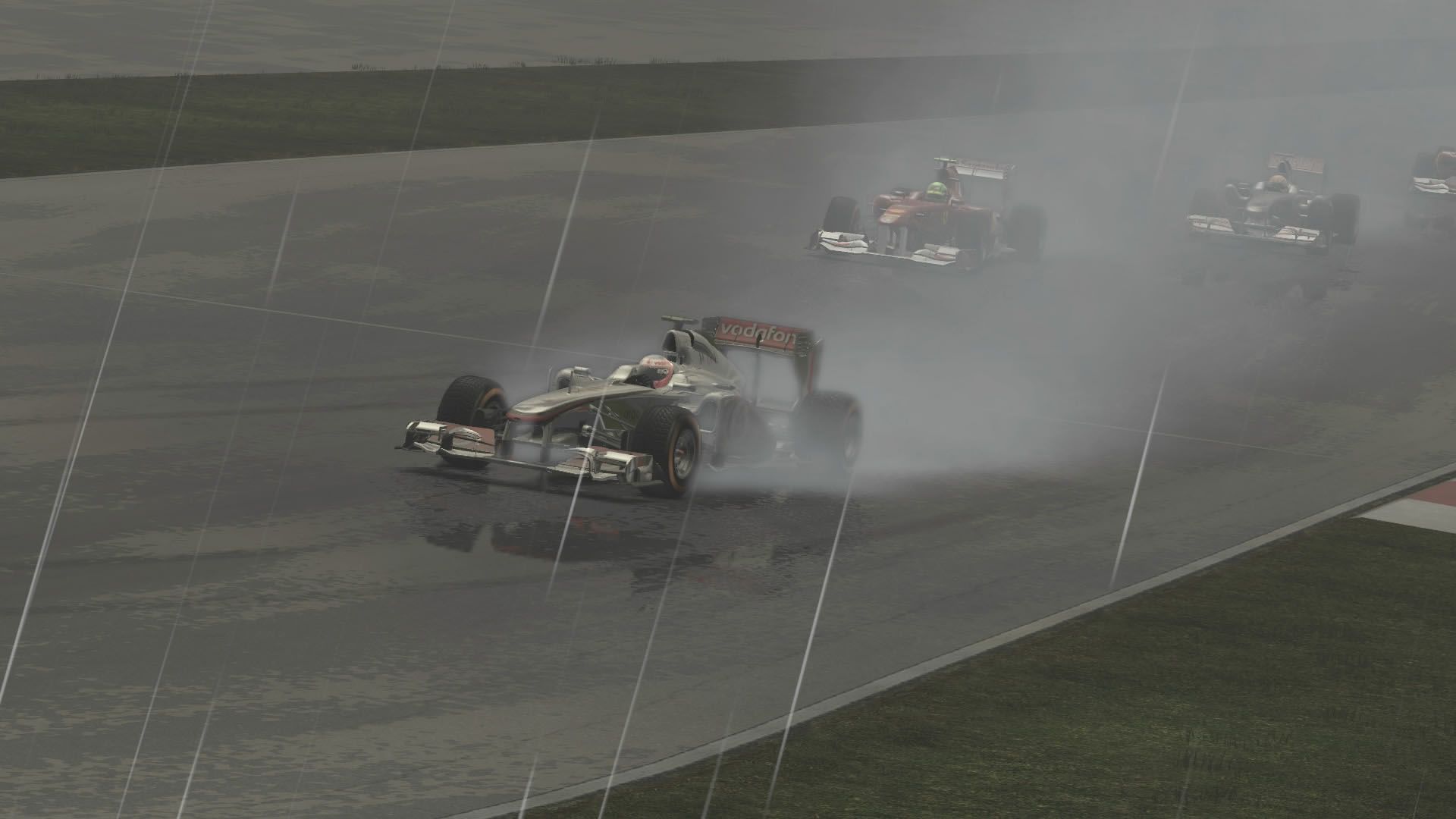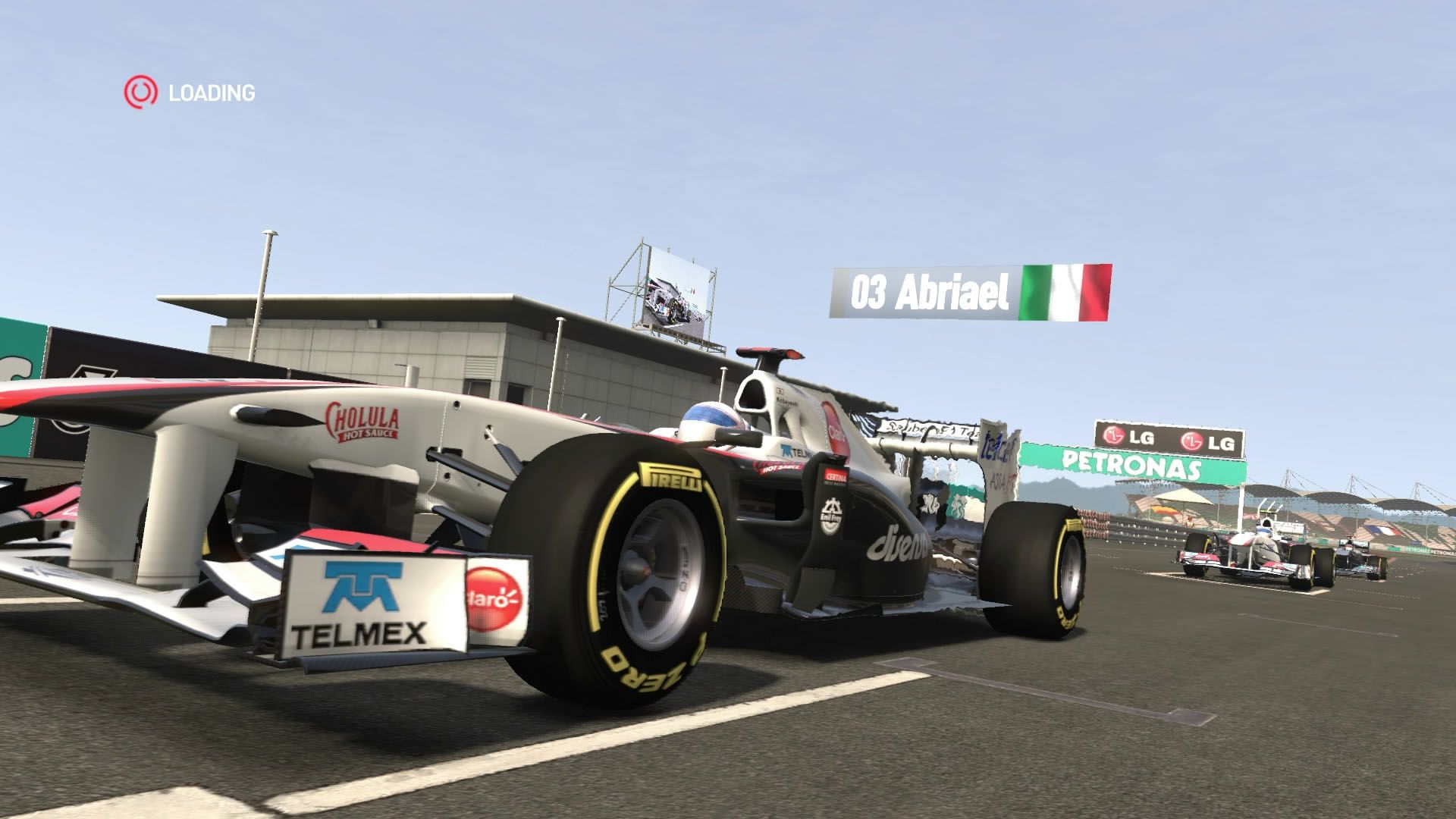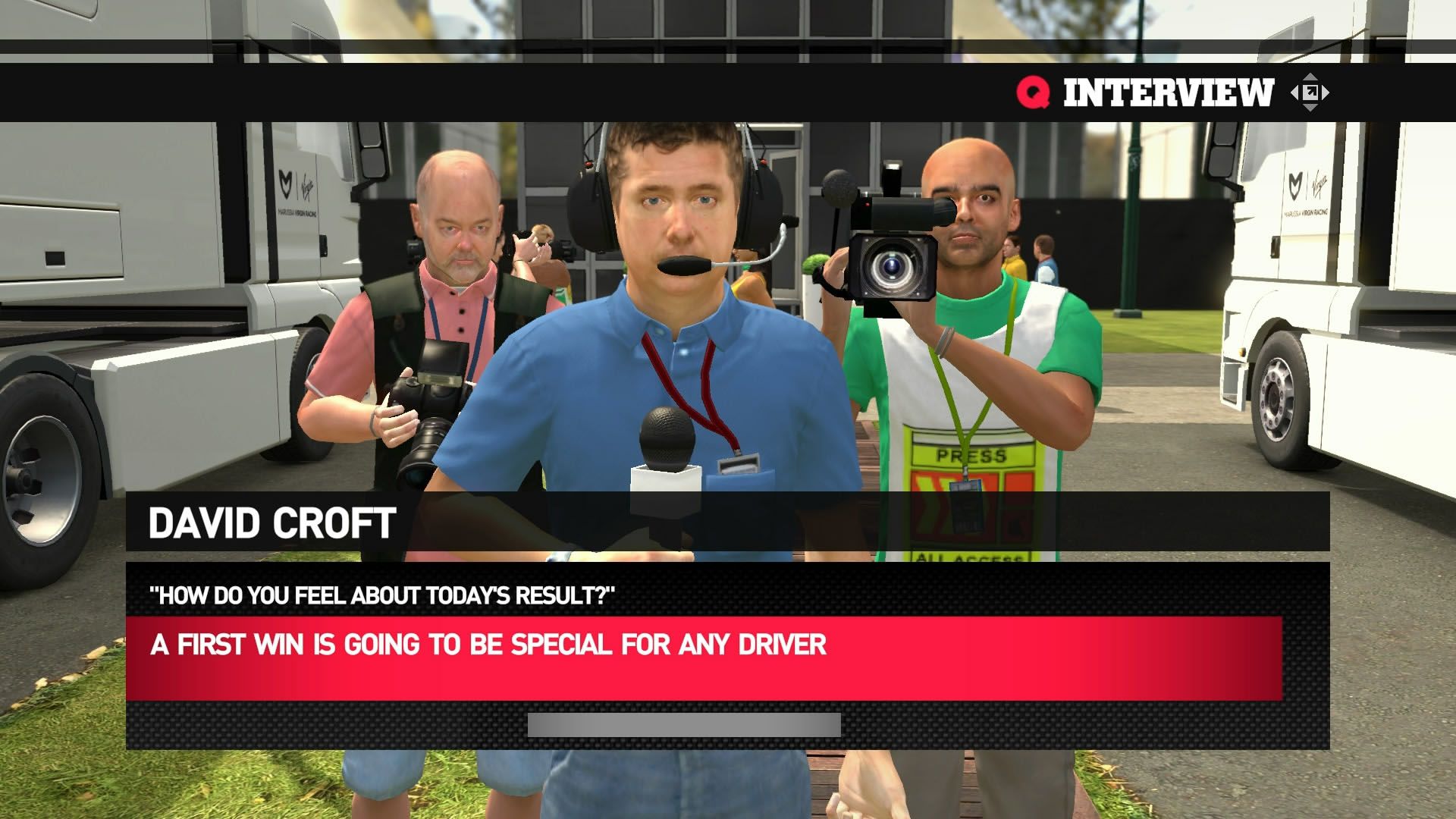I'm exhausted. Fifty-three laps are a long, long way. A distance that can take its toll on the human body even without driving in the rain three hundred kilometers-per-hour. But it's raining so hard that I have trouble reading the speedometer...
I can see the last hurdle, the dreaded Casio Triangle of Suzuka. I can hear the engine of that Ferrari chasing behind me, over the sound of my own. He wants me, like a blood red hunting hound hungry for my flesh. My shoulders are numb, but my brain orders them to move anyway, for a final struggling effort. The worn out tires squeal as I enter the corner, I feel it in my bones: the rear end is losing grip. I must compensate!
My feet move frantically, the engine behind me wails as the red hound approaches, the wheels desperately bite at the wet asphalt. One second. Two, three, four... I can almost picture myself spinning out of control into the grass, but the last straight finally appears in front of my eyes. The blood red hound fades behind me as my body relaxes, enjoying the last glorious ride towards the checkered flag...
http://www.youtube.com/embed/OqHoNgL-XDw
Codemasters is back with their newest licensed racing simulator: F1 2011, promising more polish, more realism and a better representation of what many consider the premier motor sport in the world. F1 2010 was a good game, but it had quite a few shortcomings that prevented it to be a great one, and more specifically, a solid simulative experience.
The first thing that meets the eye in F1 2011 are its visuals, that also mark the first noticeable improvement over its predecessor. The color palette is now much different, trending towards warmer and more colorful tones. It creates a more vibrant world that is more appropriate to the exciting nature of the sport.
Of course the most important aspect of a racing game's graphics are the cars: the rides of F1 2011 look the best when observed from a reasonable distance, not too far and not too near. The new reflection effects on the bodies look awesome in motion, while the colorful palette and beautiful lighting effects make them stand out beautifully on the asphalt. Some additional details like the animated DRS (I'll talk about that more in depth later) and the visible vibration of the wings make the look of the cars even more impressive.
Things start to look less enticing when the point of view draws near to the car's bodywork. The resolution of the textures doesn't cope too well with a close inspection, and a rather high degree of pixelation ends up being very visible, especially on logos and sponsors. Seeing the beloved "Cavallino Rampante" (prancing horse) badly blurred on the body of a Ferrari would make any racing fan shake his head in dismay. 3D models suffer from the same problem, as some of the elements of the cars are definitely low in polygon count. Just look at the suspensions when the camera moves behind the wheel during a replay to understand what I mean.
Of course this is partly justified by the necessity of displaying a field of 24 cars at once, that makes for a rather crowded screen compared to other racing games and requires some economy in texture resolution and polygons. That said, I can't help but feeling that Codemasters settled on the minimum common denominator of console performance, without juicing the graphics cards of the most performing gaming PCs out there, that should definitely be able to display a better level of detail on that many cars without breaking much of a sweat.
What really shines are the cockpits. The level of detail is extremely high, with the whole array of buttons, led indicators and details perfectly reproduced for each car. Each team also has its unique wheel. This can sometimes be a hassle, like in the case of Red Bull, where the indicators are not on the wheel itself, but on the dashboard, meaning that they end up hidden while cornering. Despite the practical shortcoming it's realistic and appropriate, not to mention visually impressive.
The environments prove definitely spectacular in most cases, with the advanced lighting engine bringing the tracks to life quite beautifully. The level of detail of the tracks themselves is impressive, with many little flavor details that go above and beyond the call of duty to make them feel more alive and realistic.
Even more visually pleasing is the fully dynamic weather, that can range between sunny and heavy rain during a single race. The changes in lighting and the rain effect itself are definitely a joy for the eyes, especially the clouds of water raised by the speeding cars and the reflections on the asphalt and on the cars themselves. This is perfectly complemented by the animated visual effect of rain drops on the body of the cars. It's probably the most realistic I've seen so far in a racing simulator and it turns watching replays of a rainy race into even more of a pleasure.
Some night racing is also present, even if it isn't as spectacular as the variation in weather. It definitely seems that the engine wasn't specifically built to simulate the environment at night, so everything tends to be too flat and oversaturated, losing a bit in realism. Formula 1 cars don't have their own headlights, so lighting during night racing is achieved with hundreds of spotlights that literally cover the whole track. This creates an extremely complex pattern of light and shadow that quite obviously the engine of F1 2011 can't recreate.
It's not bad enough to be jarring or to ruin the experience, but night racing in Formula 1 has a very special vibe due to the unique lighting conditions, and it's a pity not to see them reproduced effectively in the game.
Despite the fact that the game is about cars and racing tracks, there's a quite prominent human element in F1 2011, with drivers, pit crew and stewards fully modeled and animated. You can even meet journalists and race queens during breaks. While this is definitely an improvement over the standard of racing games, the execution is still far from perfect. Character textures and models often lack in detail, and even more in variation. No matter what circuit you visit, you'll see more or less always the same faces around you.
While it's true that even in real Formula 1 you meet a lot of the same people in the Paddock, what you see in F1 2011 goes a bit overboard in that, and indicates that while Codemaster tried to introduce those additional flavor elements, they spent the least resources possible in creating the related assets, detracting a little from the visual impact.
That said, the fully animated pit crew during pit stops looks absolutely spectacular, enriching the experience considerably during an event that's definitely very important in F1 racing.
Replays keep to the mixed bag theme that seems to characterize F1 2011's graphics. On the surface they definitely look spectacular, with dynamic camera angles and beautiful cars that zip all over environments enriched by advanced blur and heat effects, but the more you watch them, the more you notice little details that tend to look disturbing.
The Dynamic camera angles aren't so dynamic in the end, as the position and order of the cameras is always the same for every lap in the same track, no matter what happens. The inability to change the car on which the camera is focusing adds to that, meaning that you will miss a lot of the events of the race, especially if they happen far from your own car. Another problem is that often the engine seems to struggle with calculating the position of the cars in real time, resulting in evident little stutters as the car warps from a position to another because the engine can't keep up and decides that the previous location wasn't correct.
A definitely welcome feature of replays are the spectacular pit stops. Most racing simulators and games will automatically force you to the dashboard view while pitting, to hide the fact that the pit crew isn't modeled and animated that well. Codemasters took a different approach, taking pride in their rendition of the pit crew and fully showing them in action from an external camera as they change your tires and swap out damaged wings. I've seen them plenty times now, but they're animated so well that they're always a pleasure to watch.
Despite the aforementioned flaws, I can't say that the graphics of F1 2011 are lacking, quite the contrary, the overall look is definitely pleasing. Unfortunately the devil is in the details, and quite often the details aren't as great as they should be.
If you're curious about the visuals if the game and want to see more of them than the few pictures that can fit in this review, you can check the video review embedded in the previous page or my personal flickr gallery. There are plenty screenshots to see there.
The audio of the game definitely does the job well. While you can't do technical somersaults with engine sounds, squealing tires and assorted racing sounds, it's obvious that a lot of attention went in enriching the aural experience. Different engines have different sounds (which isn't as much a given as many would think in a F1 game) and they are very aggressive and realistic.
While the music track isn't exactly crucial in a racing simulator, F1 2011's score underlines well the slower moments of the game, while staying appropriately out of the way during racing itself. The theme song "Shake it" by The Casanovas is definitely very fitting to a racing game, and PS3 racers will be quite surprised to hear "Planetary (GO!)" by My Chemical Romance coming out of the radio. It's quite a strange choice, considering that it's the opening song of Gran Turismo 5.
Voice acting can definitely be considered lacking. There are only two voices in the game: the race engineer (the same for all teams) and the journalist that will interview us from time to time. While the journalist will repeat the same lines over and over until he'll make our ears bleed, the engineer offers a bit more variety and is definitely more pleasing to hear. Unfortunately his lines aren't always appropriate and are applied too broadly to racing situations. Go out of the pits first and complete a lap with an absolutely abysmal time and, as long as you clock it before everyone else does, you'll hear the engineer drooling praise despite the fact that you were twenty seconds slower than you should have been.
That said, though, F1 2011 is a racing simulation, and while good graphics and audio are a nice have, nothing is more important in a sim than what's hidden under the hood. The driving physics are definitely advanced, thanks to an all-new tire and suspension model that allows the player to "feel" the car much better than in F1 2010. I can't say that it simulates the handling of a F1 car perfectly, but it does the best job possible while still retaining a degree of playability for the gaming crowd.
A perfect simulation of F1 racing would prove absolutely unplayable to 99% of the target playerbase, but Codemasters did a great job in attaining an high level of realism while keeping the game playable. The handling of the cars is rather predictable, which is a testament to the solidity of the physics engine.
When I say predictable, of course, I don't mean that just anyone would be able to drive F1 2011's cars without the slightest problem. Handling a F1 car without any assist requires experience, training and a whole lot of patience. They are some of the most powerful cars in the world, after all. Luckily for the less simulation-oriented among us, the game provides a wide variety of assists that vary from ABS to two separate levels of traction control, that can turn this rather advanced simulator into a much more approachable experience for everyone. Especially the traction control set to full can definitely help those that find themselves losing grip and spinning too often.
Of course enjoying the full simulative experience requires playing with all assists turned off, and this is where the challenge of F1 2011's physics model really shows. If you aren't already an expert driver, you can definitely expect a lot of oversteer that will be hard to tame for several hours until you get used to it. Luckily, thanks to the predictability of the handling mentioned above, the level of challenge can definitely prove rewarding for those that will stick to their guns with perseverance and patience. Once you'll learn to "read" the clear signals sent by your car and to react accordingly, you'll really feel like a piano player gently stroking the keys of his instrument while performing an elaborate symphony. The sensation of power given by F1 2011's cars when driven near the limit of their grip and braking potential is amazing.
Achieving that kind of results is quite unlikely, though, if you plan to play with a controller. To play decently with no assists a wheel is pretty much required, and not just any wheel, as an high-quality one is almost indispensable. Even more than the wheel what is really crucial is a good set of pedals.
When I started testing the game I was using my old Logitech Driving Force GT. It's an extremely valid entry-level wheel with a very good quality/price ratio. Unfortunately the pedals aren't exactly the most sensitive and precise on the market, so if you don't have a very light foot on the gas, you'll still find spinning quite easy without any traction control.
After a few days I got my hands on the newest wheel and pedals set by Fanatec: the CSR (that I reviewed here), and things changed radically. The pedals are much more sensitive, allowing a much more precise control over the gas and braking. I wouldn't say that it made taming the cars in F1 2011 easy, but it suddenly became more accessible.
A slightly disappointing aspect of the physics of the game is the damage model, that seems to be rather underdeveloped. In the case of a collision you can damage or even lose your wings, resulting in a partial or total loss of downforce, and you can lose a wheel or total your car, resulting in an immediate withdrawal from the race. That's it.
Real F1 cars are extremely fragile entities that can suffer from a plethora of negative effects coming from the slightest contact, from bent suspensions to compromised aerodynamics. Failing to reproduce this and replacing it with an extremely simplified damage model is a serious shortcoming for a game that classifies itself as an advanced simulator. Visual damage is no better, as you can lose your wings or wheels, but you won't even be able to scratch the paint of your car, that will remain nice and mint even if you total it against a wall.
The game features basically all the complex rules that regulate the sport, from warnings for corner cutting, to drive through for causing crashes. While this makes racing much deeper and more interesting, it also creates a problem, that ties in a rather jarring way with the aforementioned elementary damage model. The rules are applied in a very lax way. You can still easily cut quite a few corners without receiving any warning, but the worst part is that with a bit of attention you'll still be able to cause crashes and hit other cars without incurring in any penalty.
This means that, even with both the rules and the damage model set on the highest level of difficulty, you'll still be able to use other cars as cornering aids (by bumping on them), and even cause massive chain-crashes while receiving minimal damage or no damage at all yourself, also avoiding any penalty in the process. It's not hard to do, and it can compromise the simulative value of the title. Of course you can regulate yourself and just try your best to avoid such situations, but hiding the problem doesn't remove it.
While we're talking about crashes, it's time to introduce one of the most prominent new features of F1 2011: the safety car. Now, i'm sure not everyone judges lining up behind a car and driving at a snail pace for a couple laps, as the most fun activity he can imagine, but safety cars are a very prominent part of the F1 sport, and they can be a real turning point of a race, especially if met with the right strategy, so the addition is definitely more than welcome.
Unfortunately the implementation isn't perfect, as the player doesn't retain full control over his ride as he follows the safety car. Regardless of the level of difficulty, if you accelerate too much the car will brake automatically, and the system will do pretty much everything it can to correct any error you might make and keep you in line with the others. This practically equates to some sort of autopilot that the most simulation-oriented gamers won't really appreciate.
The same can actually be said about pit stops. every time you pit, the AI will take full control of your car, driving you to your tire change and then out of the pits again. I honestly can't fathom the reason for this choice, or for the absence of an option to let the player retain control. F1 2011 is a simulation, and having a computer drive for me during some of the most crucial, albeit slow, parts of a race, isn't exactly my idea of simulating any kind of motor sport.
F1 2011 reproduces faithfully two systems introduced this year in Foruma 1: KERS and DRS. KERS (Kinetic Energy Recovery Systems) is a rechargeable horsepower boost that can be used to gain more speed for a short period of time, while DRS (Drag Reduction System) is a flap that can be used to open a gap in the rear wing to reduce drag and increase speed. While I could illustrate their inner workings at lenght, this review is going to be long enough as it is, so I'll let this season's world champion Sebastian Vettel explain them for me in the clip embedded below. It's always good to let others do my job.
http://www.youtube.com/embed/-yE3khtKZGg
As you can imagine, both systems add a very interesting tactical layer on top of the race's strategy, making overtaking easier and defending a position harder, resulting in more closely fought duels on the track, with drivers battling for the the lead by using KERS and DRS at the most crucial times.
The single player gameplay options of F1 2011 offer a nice amount of variety. We have the ability to play a single race in pretty much any condition and on any track, or a custom championship made by as many races we want. For the leaderboard-dwellers among us, there's the classic time trial mode, and the time attack scenarios, that give the player a series of "Missions" in which they have to tackle a certain track with preset conditions and settings, in order to create a completely level ground for indirect competition.
Of course the heart of the game's single player is the Career mode, that prompts the player to endure five full seasons, climbing the ranks from the status of rookie to that of an established (hopefully) world champion.
At the beginning of his career the player is given the choice between a few low-tier teams, and then his performance will be evaluated through the seasons with the possibility of being scouted by stronger teams, raising his chances to bid for the world championship.
Between races there will be events like interviews and communication between the team that will add a sort of narrative continuity to the whole affair, increasing immersion and adding a bit of variety to the game. While there's nothing groundbreaking in this, it's still a lot more than what's offered in most racing simulators, that almost never give a face or a personality to the team behind the cars, trending towards becoming tedious on the long run. The sense of achievement given by being recruited by the strongest teams, as well as the feedback provided by other characters and the media contribute to keep boredom and repetitiveness at bay.
A little flaw shows in the creation of our in-game alter ego, that proves a bit under featured. We're prompted to chose his name, nationality and helmet, but he will simply use the 3D model and face of the driver he'll replace in our team of choice. This means that there's no way to customize him to our tastes, and even that the original name and national flag will still be visible on his car and racing suit, conflicting with the name and nationality we chose. Things become paradoxical when we get recruited by another team, as our alter ego will simply "wear" the model of a different driver, with funny effects like an instant suntan if he gets hired by McLaren to replace Hamilton.
This is definitely a minor (while funny) flaw, though, and Career gameplay surely adds a level of depth that is sorely missing from many racing games, that just tend to throw a series of races in the player's face.
The suite of options available to customize one's career is also quite rich. Not only the player is empowered in chosing between long and short race week ends, the first option involving the "real deal" of three practice sessions and three qualifying sessions, and the second one shortening the process to one and one before the race, but this option can be changed before tackling every single circuit of a season, allowing to easily adapt races to the time we have whenever we sit at the wheel.
In addition to that, the ability to change the difficulty options not only between races, but also between every session of each race is an even more welcome design choice, considering the high level of challenge offered by the game. For instance I can easily see many of the more casual racers performing pretty well during the first few races of a season, and then hitting a brick wall when they get to the extremely challenging circuit of Monaco. In that case the ability to temporarily lower the level of challenge by adding in some traction control or disabling the damage modeling can save some from breaking their controller against the wall out of frustration.
Once we get to the actual race, the options provided to define the team's strategy are well rounded and deep. Casual racers will probably be very relieved to find some generic preset settings for each car, offering some adaptability to the conditions of the track without having to play the numbers game too much and without needing to acquire overly complex mechanical wisdom. On the other hand the most hardcore petrolheads will appreciate the possibility to completely customize the settings of their ride, from camber to ride height, passing by suspension stiffness and fuel mix.
Once you get on the track, you'll find out that the AI is definitely quite challenging, at least if you select the higher levels of difficulty. They will use KERS and DRS to overtake effectively and defend their position, and they will try to use every little gap you leave empty in order to pass you. They actually seem a little too mart, as crashes and errors not instigated by the player are very rare, more than in real F1.
In F1 2010 AI drivers lacked in consistency, performing extremely well on some tracks and abysmally on others. This has been addressed in F1 2011, and now the AI shows a consistent performance across all tracks, allowing the player to predict the best level of challenge to match his skills.
There seems to be a problem when the track is just partly wet as the weather turns to rain, or when it just stopped raining. During those moments the AI drivers seem to become unnaturally fast, probably due to some kind of bug in how the physics affect the computer-controlled cars. It's not game breaking, but it can be annoying when it happens.
Speaking about wet racing conditions, weather simulation is one of the elements in which the game really shines. Weather can range from clear to heavy rain, modifying the lighting and visibility conditions quite radically. Not only rainy weather looks absolutely awesome, but it affects physics realistically, as retaining grip during fast corners becomes much more of a challenge on wet asphalt. Add to that the fact that driving closely behind another car (which is the only way to overtake) in the rain appropriately reduces visibility to zero as a cloud of water flies into your face, and you get wet races that are a matter of courage, experience and resistance exactly like they are in real racing.
If you match the right level of challenge with your personal skills, single player races in F1 2011 are a lot of fun, supported by the great physics model and by the consistent AI, that will also vary its race strategy quite broadly between different teams and even between different drivers in the same team.
100% distance races are probably the most fulfilling, as they will challenge your resistance, consistency and strategy as much as your driving ability, giving a great sense of accomplishment when you can finally see that checkered flag at the end. Of course 50% and 20% length races provide shorter challenges when you're short on time, or you just won't want to put too much stress on your arms and shoulders (driving more than fifty laps can be quite taxing on the body). If you like it short and sweet you can even have three-laps races.
Multiplayer offers as much variety as single player, providing local split screen, quick races and more involved, full-length challenges that include AI drivers to fill the spots that aren't occupied by human players.
Unfortunately the quality of the experience doesn't match its variety, as the netcode seems to be far from polished, creating a lot of lag in the most crowded races. On top of that the precision and discipline required by F1 racing on a simulation level means that races in which you won't encounter at least one player that will crash into everyone, ruining the whole deal for all his peers are very rare. Unless you have a number of friends to play private races with, I can't really recommend tackling multiplayer in F1 2011 with any high expectations.
Probably it'll be worth it to revisit the multiplayer modes in a while, when the most inexperienced (or malicious) players will have improved their skills or simply left, and when the netcode will be (hopefully) patched and improved to mitigate the most annoying lag spikes.
A multiplayer feature that proves, instead, quite interesting, is the cooperative championship, that allows two players to tackle a full season as members of the same team. The idea is definitely original and offers a wide variety of scenarios, as the players can approach the peculiar F1 team coexistence in quite different ways.
They can collaborate to bring the whole team to victory, or compete to earn the title of world champion and the position of first driver of the team, or any combination of both options. Unfortunately at the moment of writing the mode still suffers from some annoying bugs that will result in the correct standings for races failing to register, probably due to some server-side issues. The mode is still definitely fun, though, and it's worth looking into if you want a fulfilling cooperative experience, especially when the bugs will be (again, hopefully) solved with a future patch.
F1 2011 is not a perfect game, there's no doubt about it, as a few poor design choices and a sizable number of issues and bugs affect the experience negatively. That said, it's still a very solid driving simulator and probably the deepest and most complete rendition of the F1 sport available to gamers. Its challenging racecraft requires perseverance, discipline and skill to be mastered, and ultimately it's a very enjoyable experience, despite the flaws.
The amazing weather simulation enriches the game further, and the career mode really makes you feel a sense of progression and accomplishment that is rare in this kind of games.
It may not be for everyone, but if you love Formula 1 and Motorsports in general and if you are up for the challenge of virtually taming some of the the wildest purebred cars ever designed, you definitely can't go wrong by giving F1 2011 a spin.

